Ancient Encounters
Se Cathedral Old Goa India
Mother Masala Tours
The Great Church of Old Goa
Se Cathedral Old Goa India. One of the oldest churches in Goa. Dedicated to Saint Catherine of Alexandria, it stands as a tribute to Portuguese military achievements and their religious fervor during the colonial era. The cathedral was built to commemorate Portugal’s triumph over the Muslim army in 1510, led by Afonso de Albuquerque, a defining moment that resulted in Portuguese control of Goa. Construction began in 1562 under the reign of King Dom Sebastião and completed in 1619 - 250 feet long - 181 feet wide. It was initially adorned with two grand bell towers, although one collapsed in 1776, leaving the remaining "Golden Bell," renowned for its deep resonance. Declared a Unesco World Heritage Site, the cathedral remains a masterpiece steeped in history, faith, and resilience.
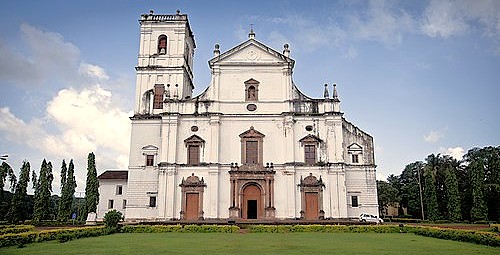
Se Cathedral Old Goa India: The Golden Bell
The golden bell at Se Cathedral in Old Goa measures approximately 2.7 meters in height and 1.2 meters in diameter. This massive bronze creation weighs around 2,500 kilograms and ranks among the largest bells in Asia. The bell hangs in the cathedral's western tower, crafted with intricate designs that reflect Portuguese artistic influences. Its impressive size contributes to the powerful sound that resonates throughout Old Goa when rung during ceremonies. The cathedral constructed this remarkable bell in the late 16th century as part of the church's grand design. The bell's metal composition includes traces of gold, giving it both its name and distinctive tone quality.
Timeless Artifacts
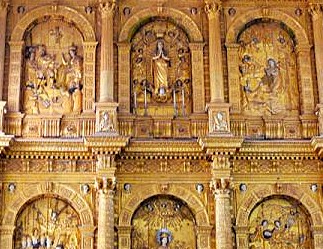
Inside the Se Cathedral, the main altar stands as a centerpiece of devotion, dedicated to St. Catherine. The six panels on either side of the altar depict scenes from St. Catherine’s life, including her martyrdom in Alexandria. The gilded reredos above the altar is another masterpiece, illustrating her awaiting execution and later being carried by angels to Mount Sinai. The cathedral also houses an ancient baptismal font dating to 1532, used by Saint Francis Xavier to baptize Goan converts to Christianity, adding a deeper historical resonance to its sacred spaces. The Chapel of the Cross of Miracles, located to the right of the nave, is another notable site.
Ancient Mosaics: Impeccable Craftsmanship
Se Cathedral Old Goa India. The interior reflects craftsmanship rooted in Renaissance and colonial traditions. With wooden panels, and intricately carved floral motifs, the artisans displayed their mastery of both symbolic and decorative art forms. Corinthian columns frame the nave, while the side chapels incorporate lattice-like wooden screens that add texture to the light-filled spaces. The arches accommodating the side altars are adorned with paintings depicting pivotal biblical moments and scenes from the saints' lives. The stone-carving details visible in the niches holding statues of Saint Peter and Saint Paul reveal a meticulous devotion to blending aesthetics with spiritual intent.
The Pulse of the Local Community

The cathedral serves as a center of spiritual activity within the Catholic community in Goa. People from Portuguese and Goan backgrounds gather here, reflecting the cultural diversity that shaped Goa during colonial times. Local residents maintain the cathedral through active participation and historical interest in its preservation. Many families connect to this site across generations, seeing it as both a religious space and important heritage landmark. The architecture combines European design principles with some local adaptations that evolved over centuries.
Festivals of Devotion: Honouring the Sacred and the Divine
The Cathedral remains a focal point for major religious celebrations in Goa, notably the Feast of Saint Catherine held annually on November 25. This festival honors the saint's strength and divine connection, drawing devout locals to participate in processions and prayer ceremonies. The cathedral also becomes an integral part of Christmas celebrations in Old Goa, as it hosts vibrant midnight masses that echo through its immense halls. The bell tower reverberates with hymns, turning the feast into a celebration of both heritage and faith.
Capturing the Magic: A Photographic Haven

The golden light filters through its towering bell tower while the grand facade creates a striking silhouette against the tropical sky. Photographers capture the intricate stone carvings along the walls that tell stories through their detailed designs. The interior spaces offer interesting light patterns as sunshine moves across the ancient floors. We can find unique angles looking upward at architectural features or focusing on small details of religious artwork. Morning hours provide soft lighting conditions while afternoon sun creates dramatic shadows across the structure.
A Culinary Journey: Savor the Flavour
Near the cathedral, small eateries serve traditional dishes like vindaloo, a slow-cooked pork curry infused with vinegar and aromatic spices - a recipe attributed to Portuguese influence. Simply prepared mackerel recheado, or mackerel stuffed with a spiced coconut paste, highlights the region's coastal bounty. Desserts such as bebinca, a multi-layered indulgence made with coconut milk and eggs, are also frequently tied to religious festivals and gatherings near sacred Goan sites. These flavors evoke the essence of Goa's past while remaining beloved staples of everyday life.
The Connection With The Gods
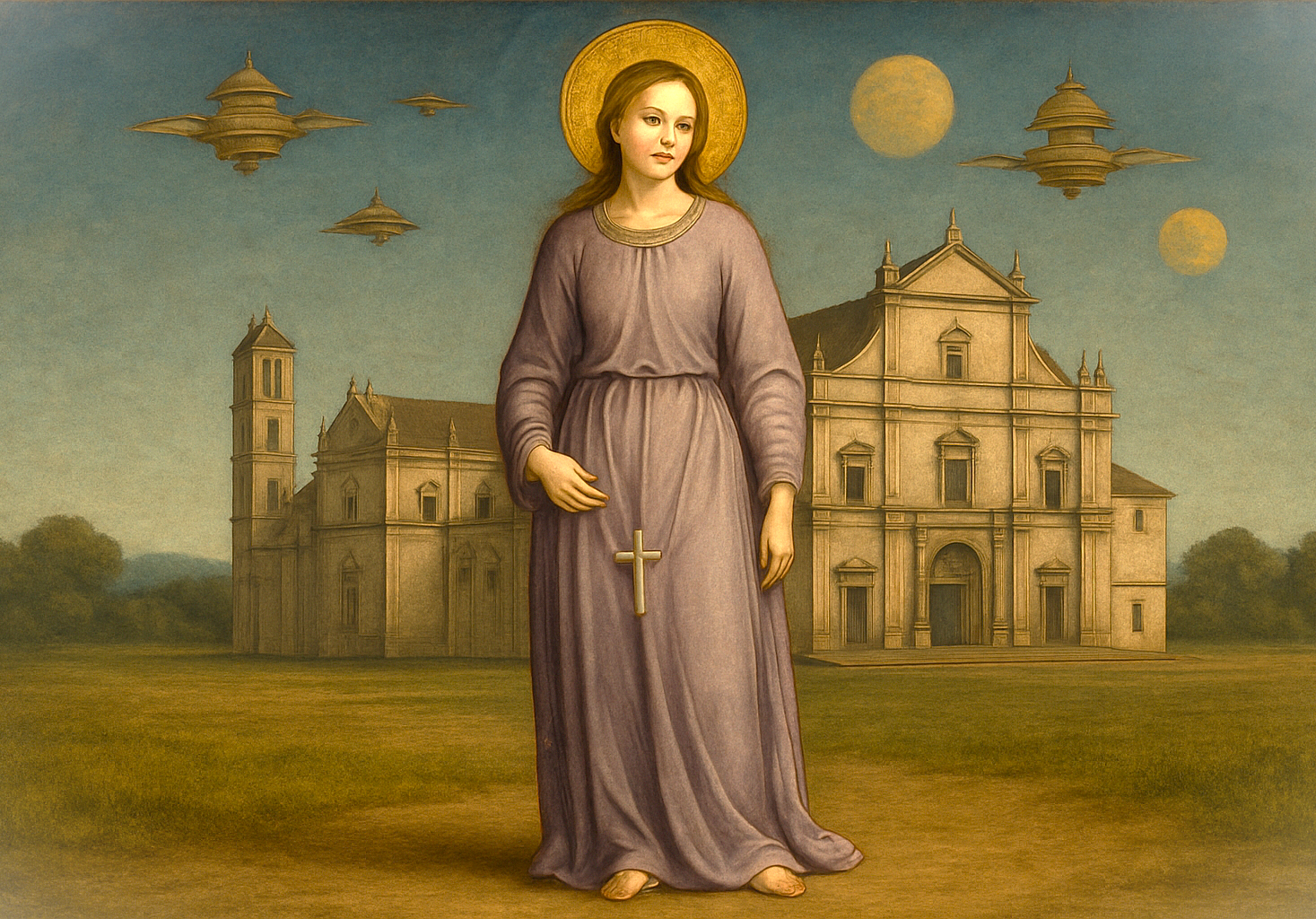
The cathedral honors Saint Catherine of Alexandria who represents wisdom in Christian tradition. Her story connects to this place through Afonso de Albuquerque's military success in 1510, which happened on her feast day. Portuguese settlers often named important buildings after saints they believed provided protection during difficult times. The interior artwork displays scenes from Catherine's life through various paintings and detailed carvings throughout the space. These artistic elements tell the story of her strong beliefs and eventual martyrdom by beheading.
Ancient Technologies: Sacred Sound, Geometry & Astrological Influences
Se Cathedral Old Goa India. Barrel-vaulted naves were constructed to amplify sound during liturgies, ensuring that hymns and prayers resonated across the large church interior. These spaces naturally enhance the 528 Hz "miracle" frequency and 396 Hz "liberation" Solfeggio tones when certain hymns are sung, creating healing vibrations throughout the cathedral. The use of locally available laterite stone ensured both durability and insulation, keeping the interiors naturally cool while amplifying these sacred frequencies.
Serendipitous Meetings: Beyond the Main Path
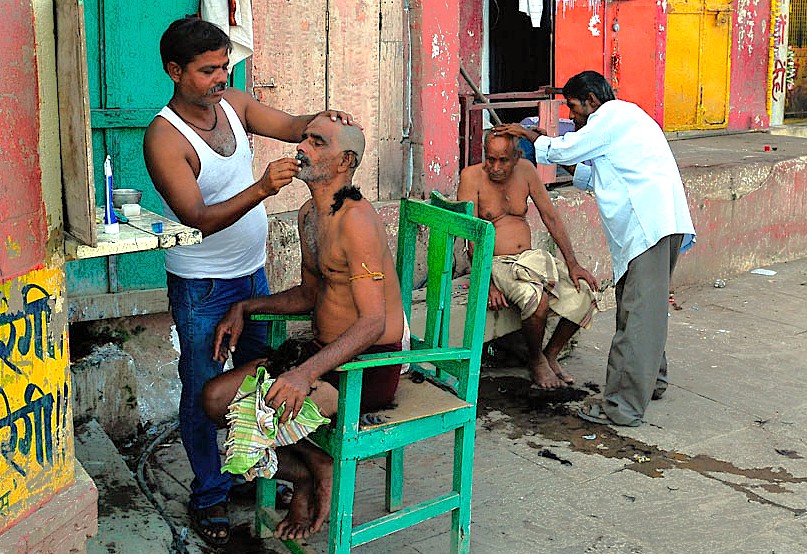
Walking around the surrounding grounds reveals intriquing relics of Goa’s colonial past. The neatly laid pathways meander through lush gardens, inviting visitors to discover smaller, hidden chapels and the romantic beauty of crumbling archways. These tranquil spaces, shaded by ancient, towering tropical trees, offer a peaceful respite from the sun. Exploring these less-frequented parts unveils Goa’s diverse and complex historical layers. You might find the evocative ruins of abandoned convent walls or stumble upon stone inscriptions recounting long-forgotten victories, dates, and sacred consecrations.
Resilience and Renewal: Overcoming Adversity’s Challenges
Se Cathedral Old Goa India. The cathedral faced its share of challenges through centuries, including the collapse of the south bell tower in 1776 and neglect as political and ecclesiastical power shifted away from Old Goa. Despite these adversities, the cathedral was preserved under the care of local clergy and, eventually, heritage organizations. In 1953, Pope Pius XII conferred the "Golden Rose" honor on the Se Cathedral, underscoring its global importance to the Catholic faith. Continued conservation efforts funded by Unesco and the local government preserve its magnificance and history.
Urban Legends: Strange Sightings, Myths and Mysteries
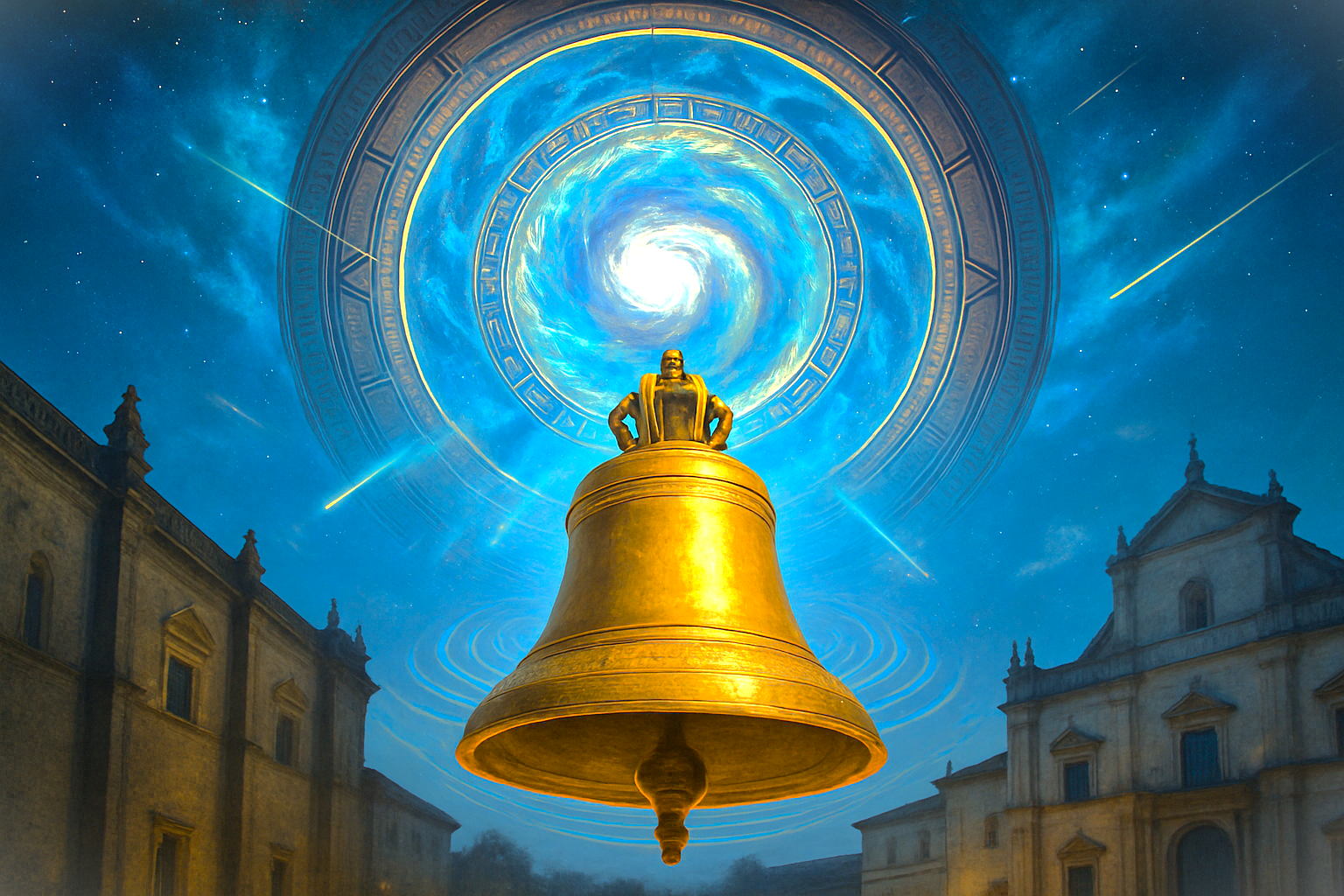
The Golden Bell at carries stories that have circulated through Old Goa across generations. According to local accounts, this massive bronze bell sometimes rings by itself during quiet midnight hours when the cathedral stands empty. The sounds from this bell travel far beyond the church walls and into surrounding villages with a clarity that seems unusual. Many people believe these tones bring good fortune to those who hear them throughout the year. Another tale connects to collapsed south tower which fell centuries ago under mysterious circumstances.
Let’s Go Big: The Time Is Now
Se Cathedral Old Goa India. The Cathedral welcomes everyone with large hallways filled with natural light streaming through tall windows. This massive structure stands as the largest church in Asia and remains an important landmark in Old Goa. Walking through the cathedral allows people to experience architecture that combines Portuguese and Indian influences in a unique style. The building contains numerous artworks that tell stories from Christian history through paintings and carved details. The cathedral holds regular services while also serving as a cultural landmark within the Unesco World Heritage area.
Symphony of Generosity: Offerings from Wanderers to Residents
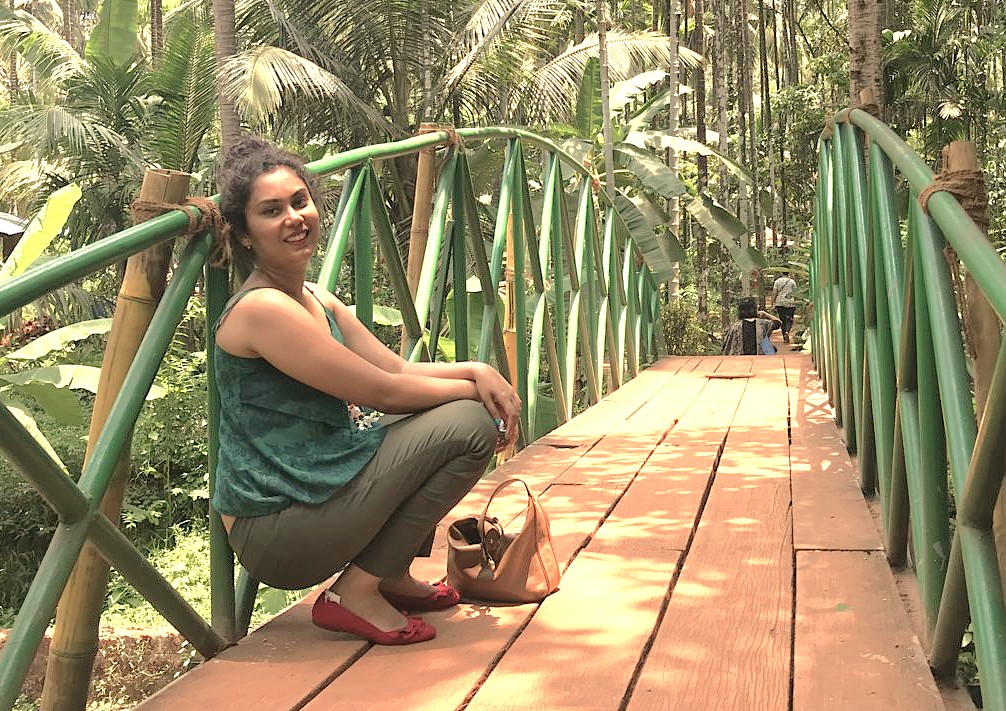
The Se Cathedral creates economic opportunities for local vendors who sell crafts, food, and souvenirs nearby. These small businesses thrive on tourism while providing authentic local products. Tourists gain cultural knowledge about Goan history through interactions with local guides who share stories passed through generations. The cathedral maintenance relies on tourism revenue which helps preserve this historical landmark for future generations. Local transportation services connect travelers with the cathedral and other nearby attractions. Photography enthusiasts capture architectural details while locals maintain their heritage site with pride.